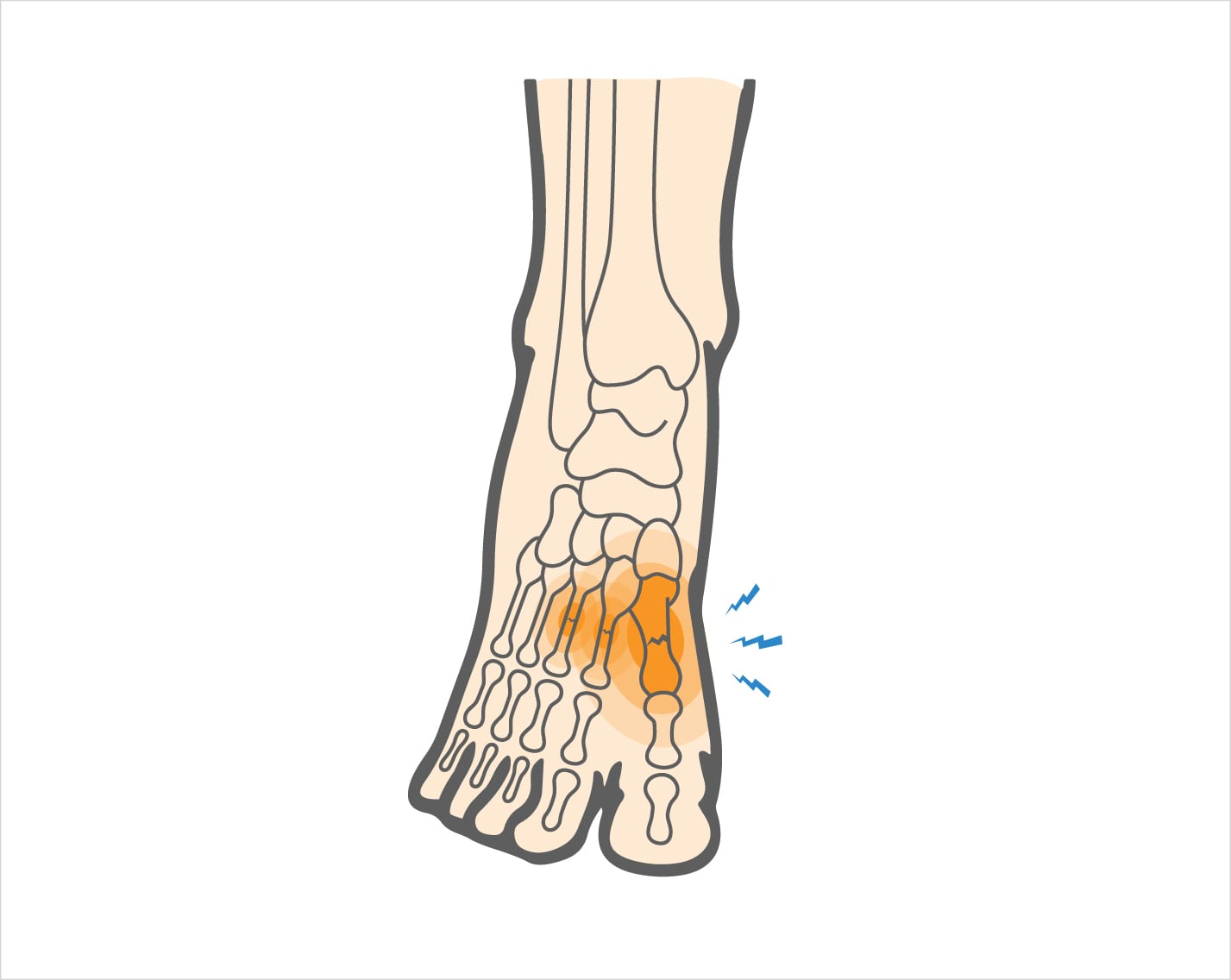The metatarsals are the five long bones in the middle of the foot. They connect the ankle to the toes. A stress fracture is a small break in a metatarsal bone, usually caused by overuse. The second and third metatarsals are the most common sites for a stress fracture to develop in the foot.
Metatarsal Stress Fracture Causes, Symptoms & Treatment
The metatarsals are the five long bones in the middle of the foot. They connect the ankle to the toes. A stress fracture is a small break in a metatarsal bone, usually caused by overuse. The second and third metatarsals are the most common sites for a stress fracture to develop in the foot.
Overview
Overview

What causes Metatarsal Stress Fracture?
Stress fractures in the metatarsal bones, sometimes called hairline fractures, are common among runners and other athletes that place repeated stress on their feet over a long period of time. A change in sport or suddenly increasing your activity level can also lead to this injury.
Metatarsal stress fractures are most common in these sports:
• Running
• Soccer
• Field hockey
• Basketball
• Dance
Symptoms
At first, people with a metatarsal stress fracture may feel pain over a wide area of their foot when active, with the pain subsiding when they are resting. This may progress to a constant level of pain that is focused over the affected metatarsal. Other common symptoms include:
• Swelling and tenderness over the middle part of your foot
• Difficulty walking, limping
When to see a doctor
If you think you have a metatarsal stress fracture, it’s important to stop activity that puts stress on your feet and see a doctor for a diagnosis and proper treatment. Left untreated, stress fractures can get progressively worse. At your visit, your doctor will look for signs of swelling and point tenderness or pain over the affected areas of your foot. X-rays may be ordered to get an image of the fracture. However, in their early stages, stress fractures often don’t appear on x-rays. Other imaging tests, such as a magnetic resonance imaging (MRI) scan or bone scan, may also be ordered as they are more sensitive in showing tiny cracks.
Non-operative treatment
Usually, metatarsal stress fractures are treated conservatively. You will need to avoid sports that place repeated stress on your feet, such as running, to give your fracture time to heal. Additional common treatments may include:
• Applying ice and elevating your foot to reduce swelling and pain
• Using crutches if walking is painful
• Wearing a special boot or cast to immobilize your foot
• Physical therapy only after the bone has healed
Try these exercises to help address your condition:
Below is a PDF of the Exercise Program
Surgical Treatment
Surgery is usually not needed to treat stress fractures. Occasionally, your doctor may recommend surgery if a stress fracture does not heal with conservative treatment.
Recovery
Depending on the extent of your injury, recovery time can take three or more months. During the rehabilitation phase, physical therapy can be helpful in building strength and increasing range of motion. To stay active, sports like swimming and cycling may provide alternatives to running or other sports that could re-injure your foot. When resuming your normal activities, work with your doctor and physical therapist on a gradual build-up to your previous intensity levels.
GET BACK TO WHAT YOU LOVE. FASTER
Sources
https://orthoinfo.aaos.org/en/diseases–conditions/stress-fractures-of-the-foot-and-ankle/
https://medlineplus.gov/ency/patientinstructions/000553.htm
https://www.ahni.com/Specialties/Foot+and+Ankle/Articles/Common+Disorders/Metatarsal+Stress+Fracture.html
https://www.verywellfit.com/metatarsal-stress-fracture-causes-and-treatment-4065391

